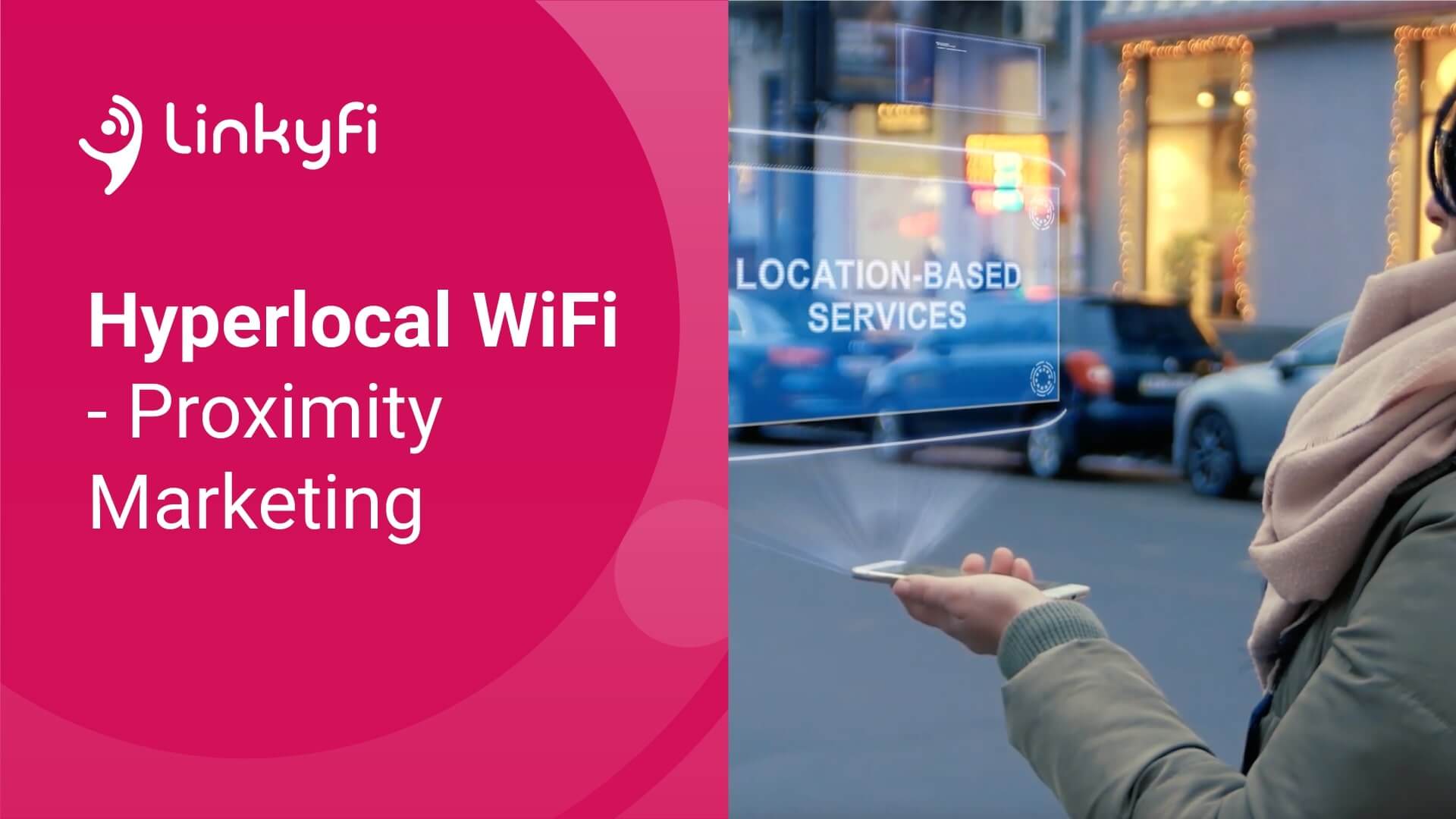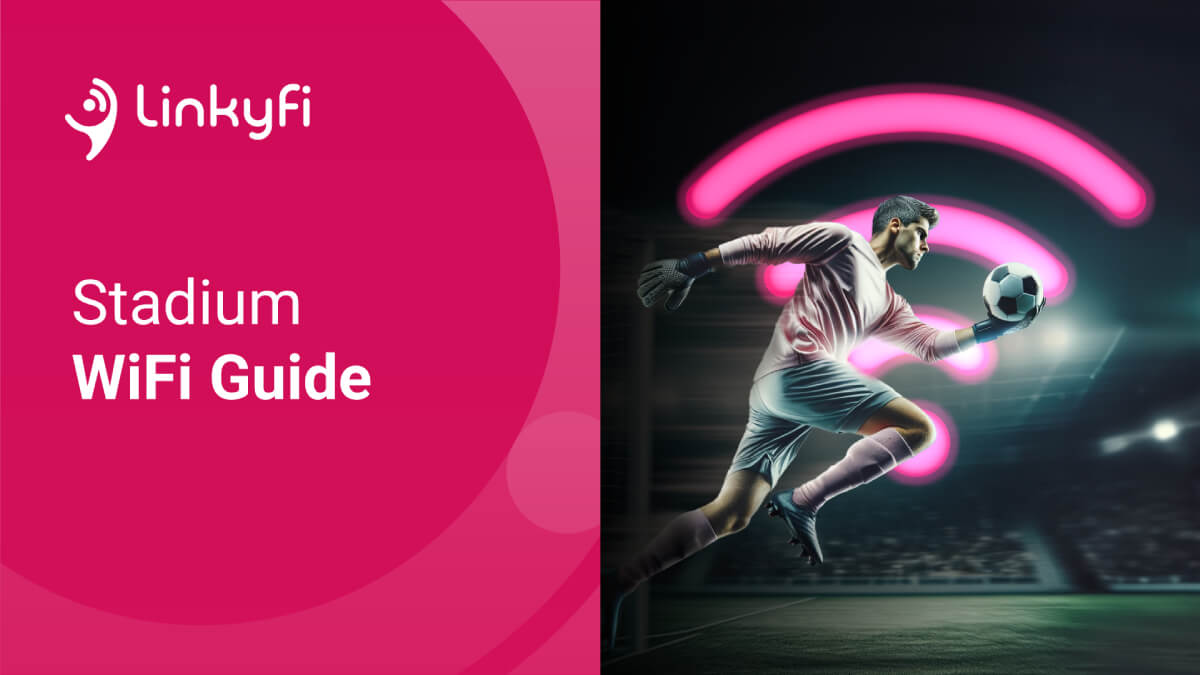Hyperlocal WiFi Marketing Solution: A Deep Dive into Precision Marketing

You're strolling down the street, passing by your favorite little coffee shop – the one with the vintage vibes and fresh pastries. Lost in thought about your day, your phone buzzes. An unexpected SMS lights up your screen: "Hey there! Fancy a latte? Drop by now and enjoy a 10% discount on your favorite brew. ☕️ See you soon!"
Your eyebrows raise in surprise. What impeccable timing, right? It almost feels like the coffee shop knows you're nearby. Well, here's a secret: they do!
Welcome to the world of Hyperlocal WiFi Marketing Solutions, a strategy that's reshaping how businesses connect with their patrons, ensuring they offer tailored deals and experiences right when and where they matter most.
Unleash Proximity Power.
The Magic Behind the Message
The buzzword might be 'hyperlocal', but there's nothing 'hyped' about it. This ingenious blend of technology and marketing strategy has provided businesses, big and small, with the ability to engage with potential customers in real-time, based on their immediate location. Think of it as the shop owner standing at the entrance, personally inviting you in – only now, it's digitized, more scalable, and, arguably, even more effective.
The beauty of this marketing marvel lies in its ability to bridge the virtual and physical worlds seamlessly. It's like having a friendly digital assistant, always on the lookout, ensuring you never miss out on the best deals in your vicinity.
How Does It Work?
While the end result might feel like a splash of magic, the mechanics behind Hyperlocal WiFi Marketing Solutions are rooted in solid technological principles. Let’s delve into the nuts and bolts of this fascinating system.
1. Signal Detection and Strength: At the heart of this system lies the ability to detect a device's presence. This is achieved by identifying the device's signal strength. Contrary to what one might assume, a strong connection strength, suitable for browsing or streaming, isn’t necessary. To merely detect a device's presence, a minimal signal strength of around -100dBm is adequate. To put that into perspective, it's a faint whisper compared to the robust chorus required for regular internet activities.
2. Multiple Access Points: For a venue to effectively pinpoint specific areas and deploy targeted campaigns, it requires a sophisticated infrastructure of multiple access points. Imagine a large store or a sprawling coffee shop: just one WiFi router wouldn't provide enough granularity. To carve out distinct zones or 'areas', a venue would typically need at least six access points. Think of these as individual markers in a maze, helping businesses map out the space and the potential customers within it.
3. Accuracy and Infrastructure: Precision is paramount when delivering hyperlocal promotions. Nobody wants to receive a discount for the men's section when they're browsing in the women's section! With a robust infrastructure tailored for location-based services, businesses can attain an accuracy level of 3-5 meters. While this might not pinpoint the exact shelf you’re standing in front of, it's accurate enough to determine the store section or zone, ensuring that the marketing message you receive is contextually relevant.
4. Integrating with Marketing Triggers: Upon accurately determining a customer's location, the system integrates with the venue's marketing platforms. This could be an automated SMS system, an email server, or even third-party applications like WhatsApp. Once the user's proximity and location are verified against predefined criteria – for instance, walking past the coffee section – the system springs into action, sending out the relevant promotional message.
In essence, Hyperlocal WiFi Marketing Solutions artfully merge high-tech infrastructure with insightful marketing strategies. This interplay ensures that businesses don’t just cast a wide net hoping to catch a few fishes, but rather deploy a smart, targeted approach to engage potential customers right when and where it matters most.
For more details about infrastructure for location-based services please check our WiFi calculator
Deep Dive Desired? Linkyfi's Specialists On Call!
The Road Ahead
While the concept might sound futuristic, it's rapidly becoming the norm. As you continue your walk, pondering that perfectly timed coffee discount, consider the countless other interactions and opportunities that could be tailored to your preferences and location.
Hyperlocal WiFi Marketing Solutions are not just a trend, but a testament to how businesses are evolving to stay relevant and personal in an ever-connected digital age. So, the next time you're out and about and receive that perfectly timed message, remember: it's not magic; it's just really smart marketing.
Crafting Your WiFi and Proximity Marketing Campaigns
Creating a successful WiFi and proximity marketing campaign isn't just about sending the right messages. It’s about ensuring these messages reach your audience at the exact moment they're most receptive. The secret sauce? Defining specific areas or ranges within your venue to trigger these messages. Let’s walk through the steps:
1. Venue Analysis
Begin by evaluating your venue's layout. Is it a large open space, or does it have multiple sections? Knowing the physical structure will help in determining how to best set up your access points and define the zones.
2. Identify Key Zones
Once you're familiar with your venue's layout, identify areas where you'd like to trigger specific actions. This could be near the entrance, by the checkout counters, or next to promotional stands. Think about where your customers naturally gather or pause, and leverage these spots.
3. Set Up Access Points
To ensure precision, set up at least six access points throughout the venue. This will not only help in accurate detection but also in triangulating user positions for the utmost precision.
4. Define Range Boundaries
For each identified zone, set clear boundaries. This means determining the range within which devices should be detected and prompted. Keep in mind the expected accuracy of 3-5 meters. Adjust boundaries accordingly to ensure that messages are relevant to the user's exact location.
5. Message Crafting
Now that you've demarcated your zones, craft bespoke messages for each. Whether it’s a discount near the bakery section or a promo code by the apparels, ensure each message resonates with the surroundings.
6. Test and Refine
Before going live, run tests to ensure that everything works seamlessly. Check that the right messages are triggered in the correct zones. Refine the boundaries, message timings, or content as needed based on these tests.
7. Monitor and Iterate
Even after your campaign is up and running, continuous monitoring is essential. Track how users respond, and iterate on your strategy accordingly. Maybe a certain zone isn't as effective, or perhaps a message needs tweaking – always be ready to evolve.
In essence, while WiFi and proximity marketing offer tremendous potential, their success largely hinges on meticulous planning and strategic zone definition. So, take the time to craft a campaign that's not just tech-savvy but also customer-centric.
Intrigued? Linkyfi’s Experts Will Guide You!
Wrap Up
WiFi marketing solutions, when paired with proximity marketing, offer a realm of exciting possibilities. From the coffee shop down the street to the most elaborate shopping malls, there’s always room for a dash of marketing magic. So the next time you connect to a public WiFi, spare a thought for the marketing wizards working behind the scenes. And for those diving into this world, remember: with great WiFi power, comes great responsibility!
Linkyfi: Your Proximity Marketing Partner.
More to read:
https://en.wikipedia.org/wiki/Proximity_marketing
https://en.wikipedia.org/wiki/Hyperlocal
https://en.wikipedia.org/wiki/Location-based_service
Recommended posts
- Understanding WiFi Access Points: A Simple Guide
- WiFi for Stadiums Explained
- Guest WiFi - Easter Marketing with AI: A Step-by-Step Guide
Subscribe to stay in the loop with all our latest content:
Recommended posts



